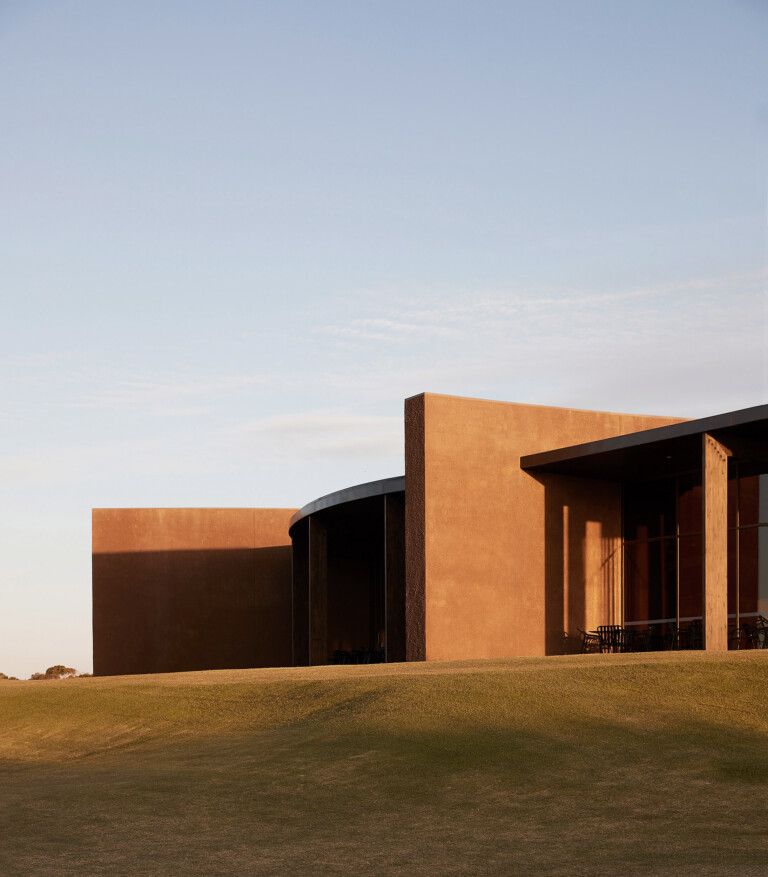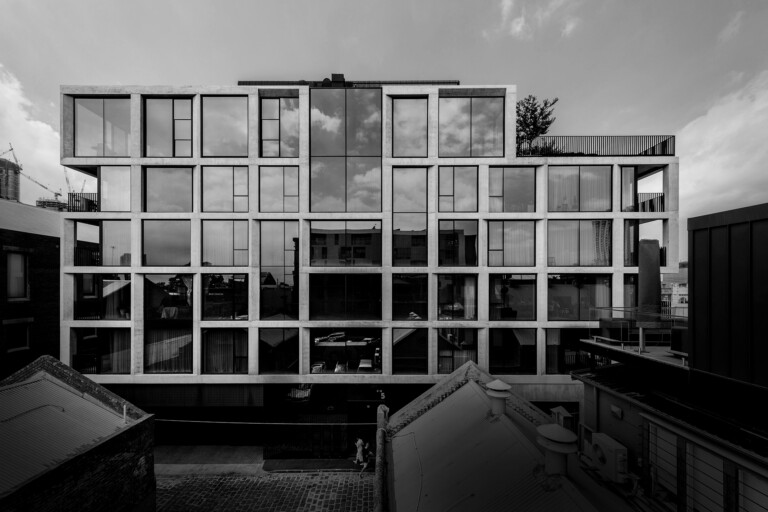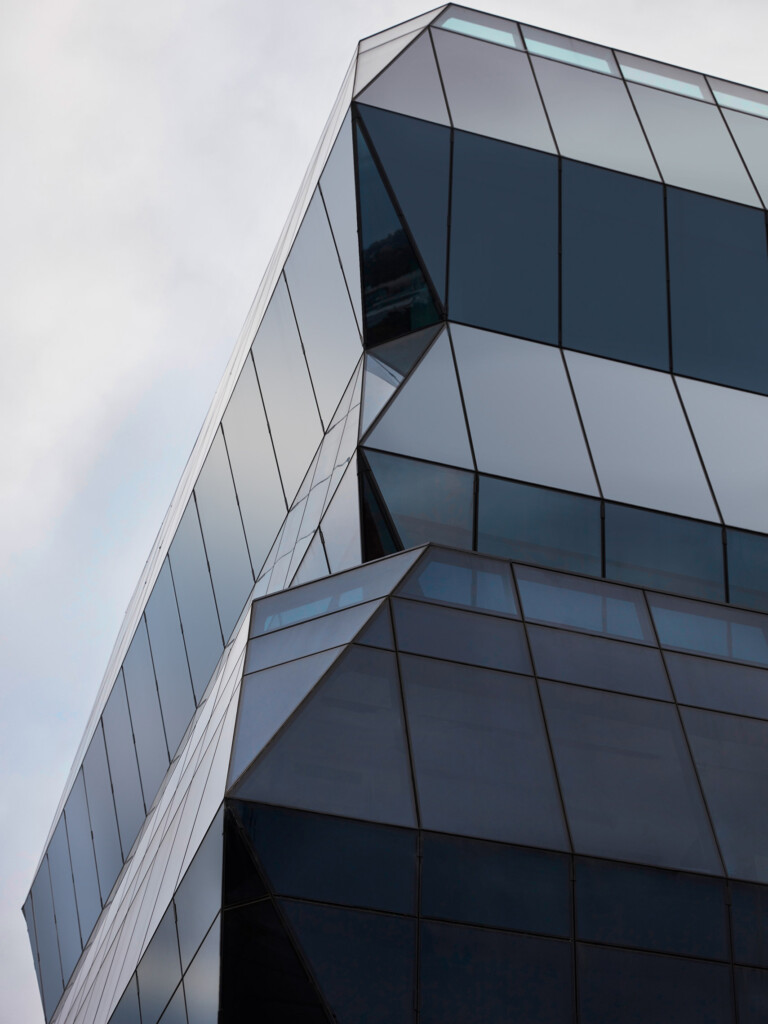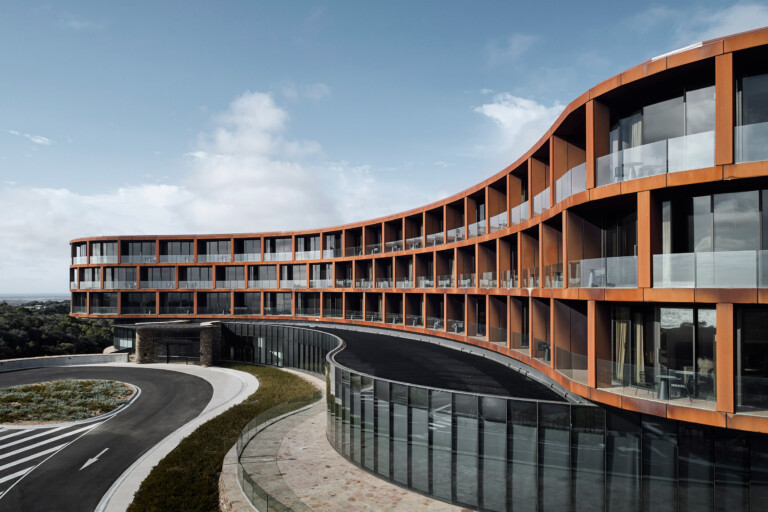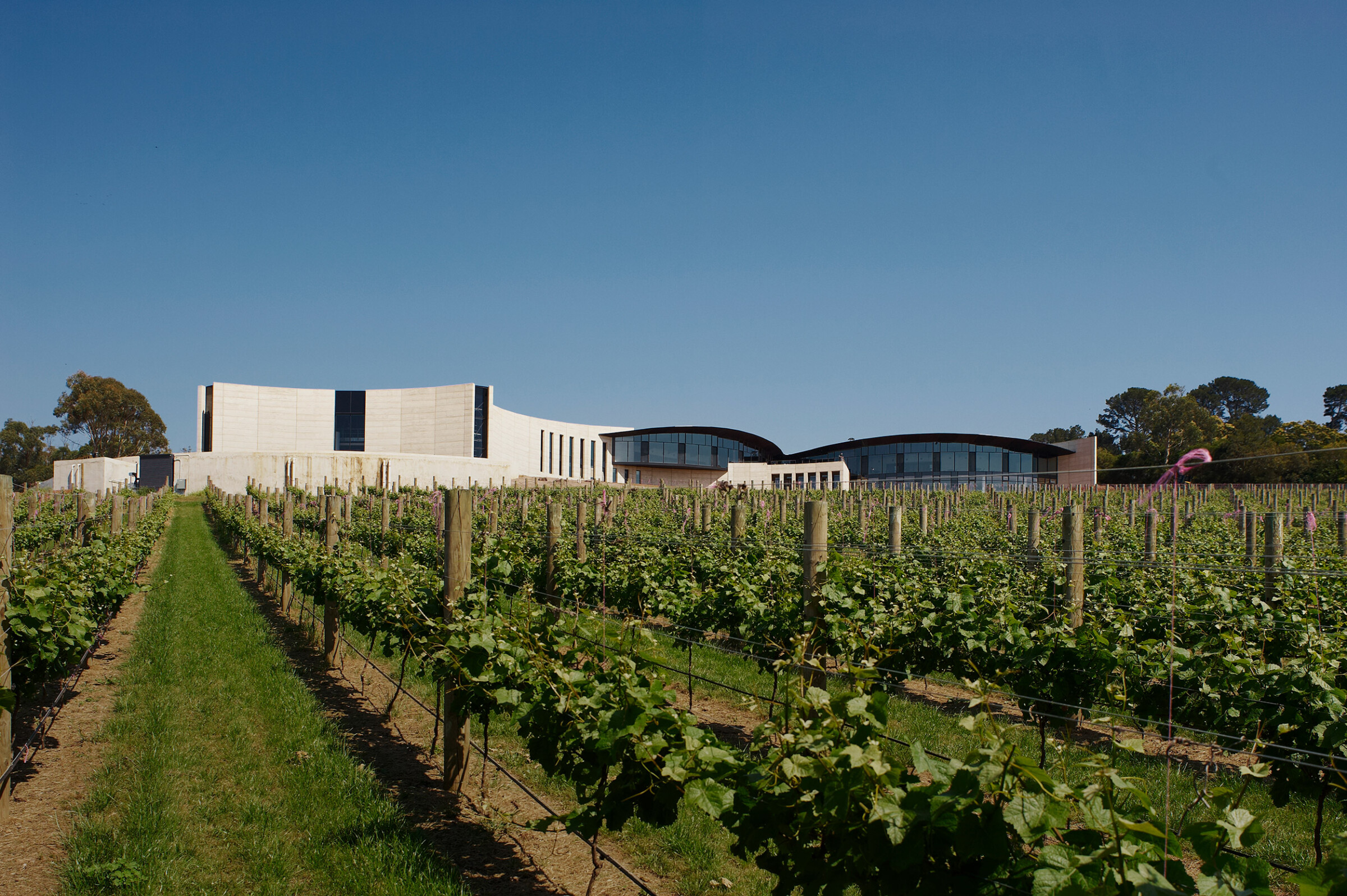

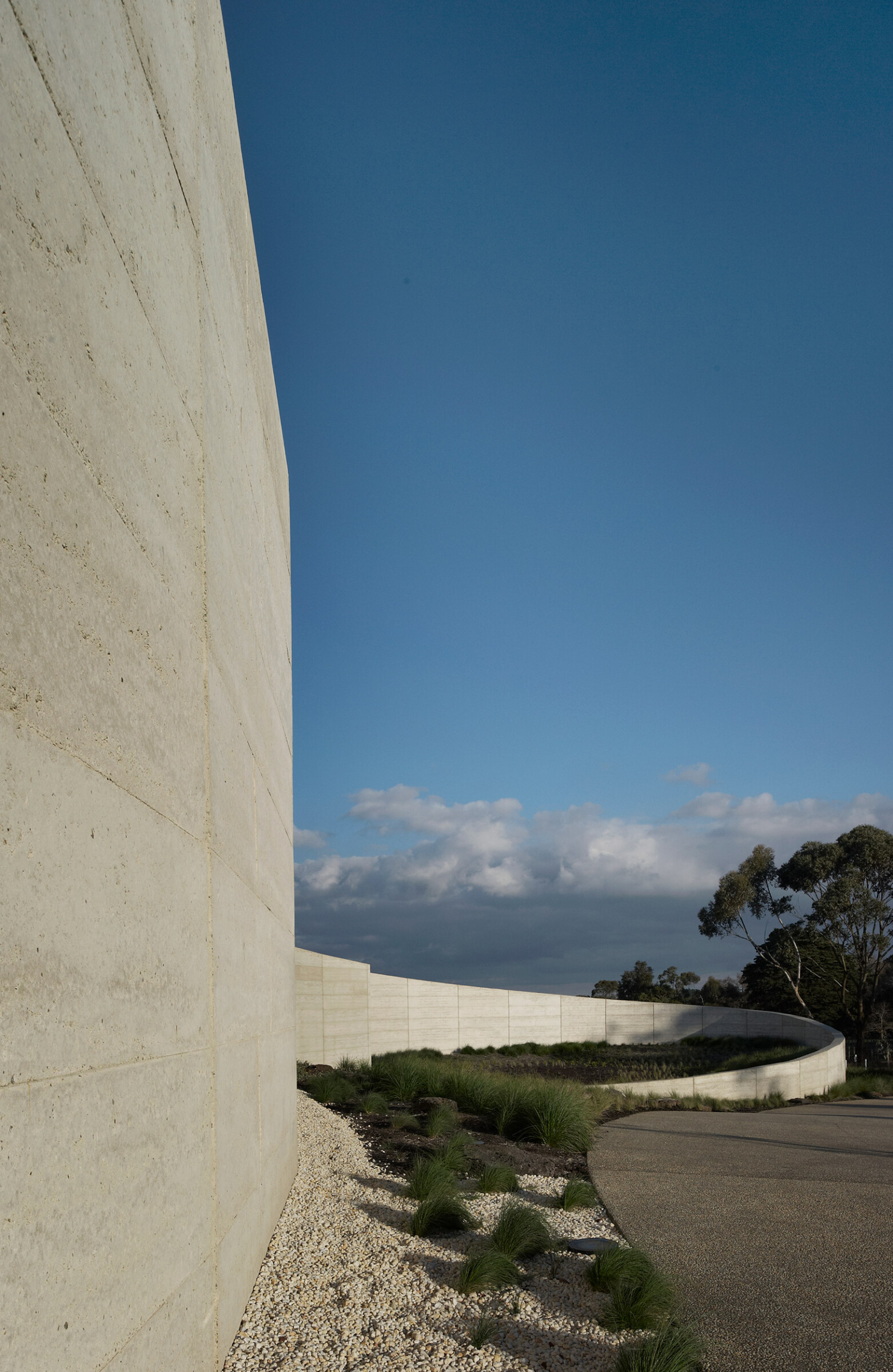
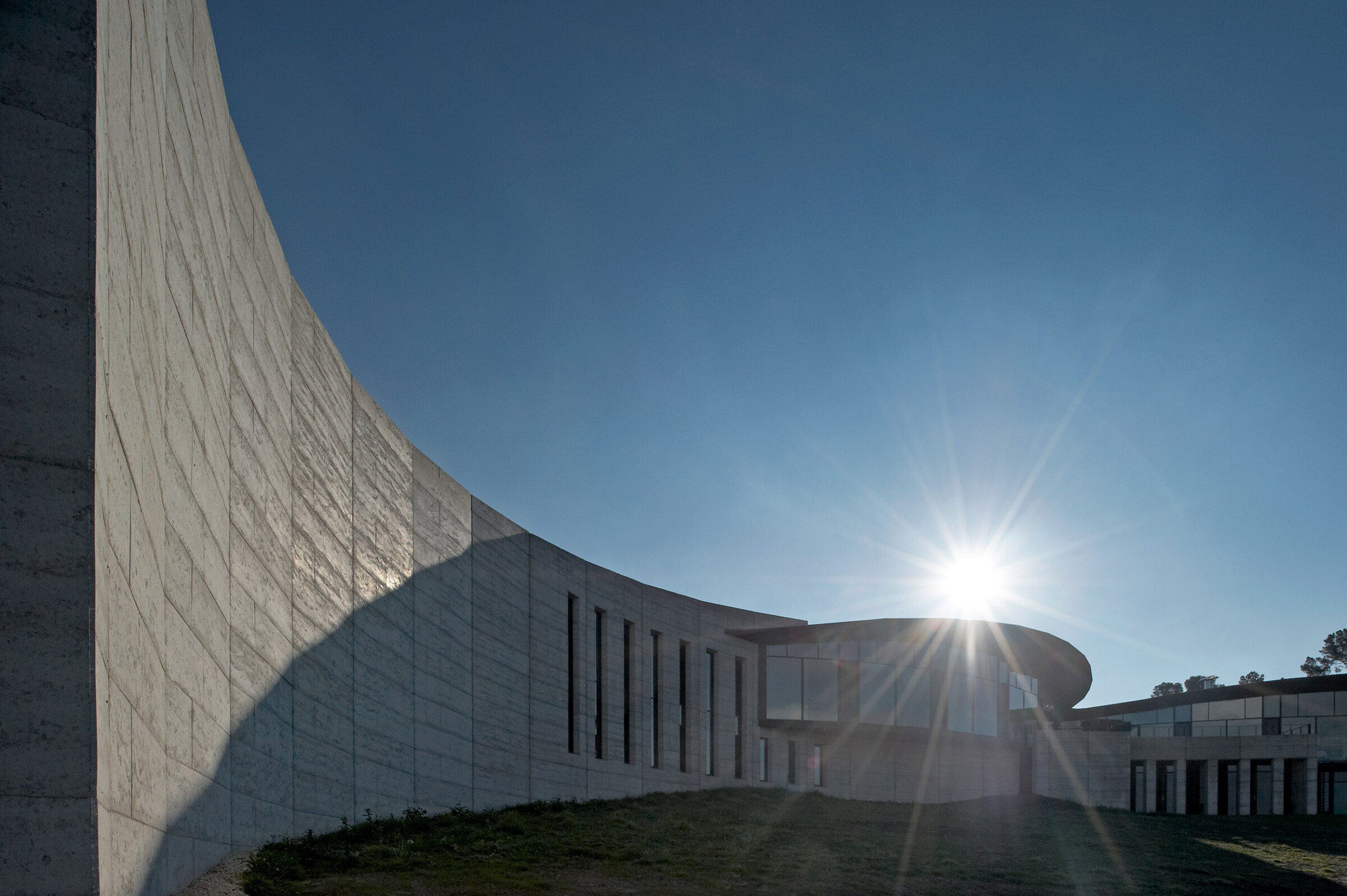
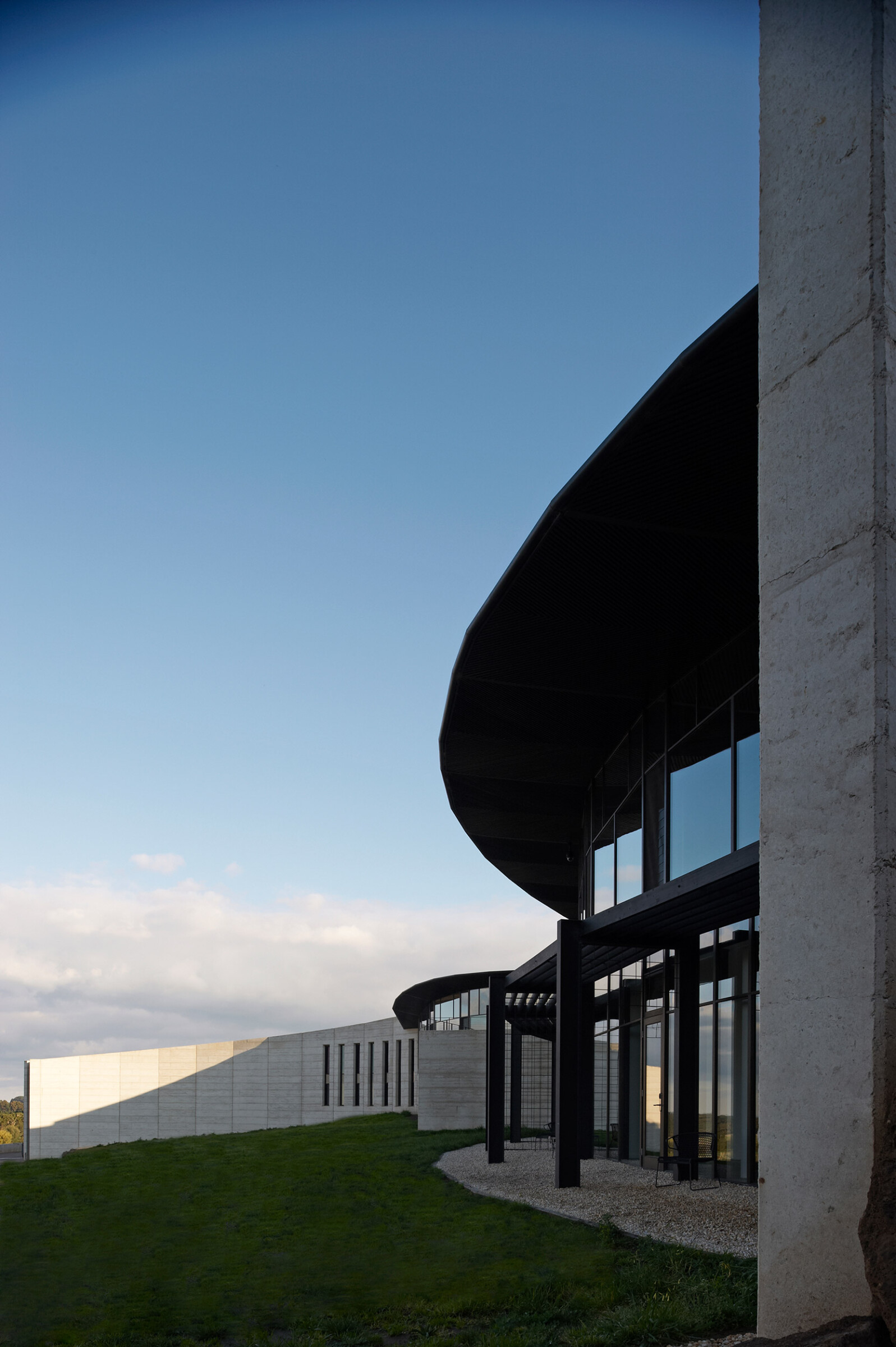
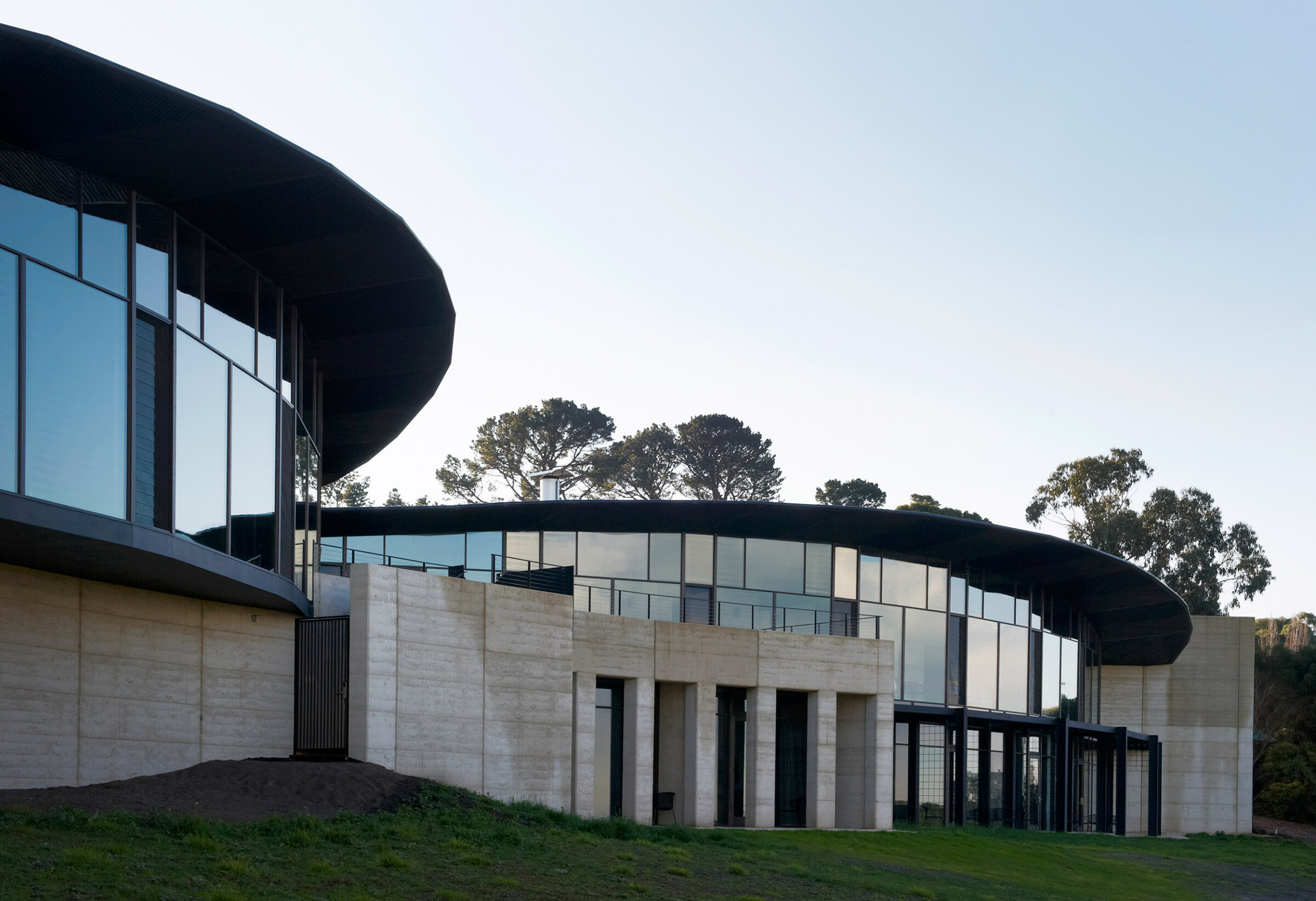
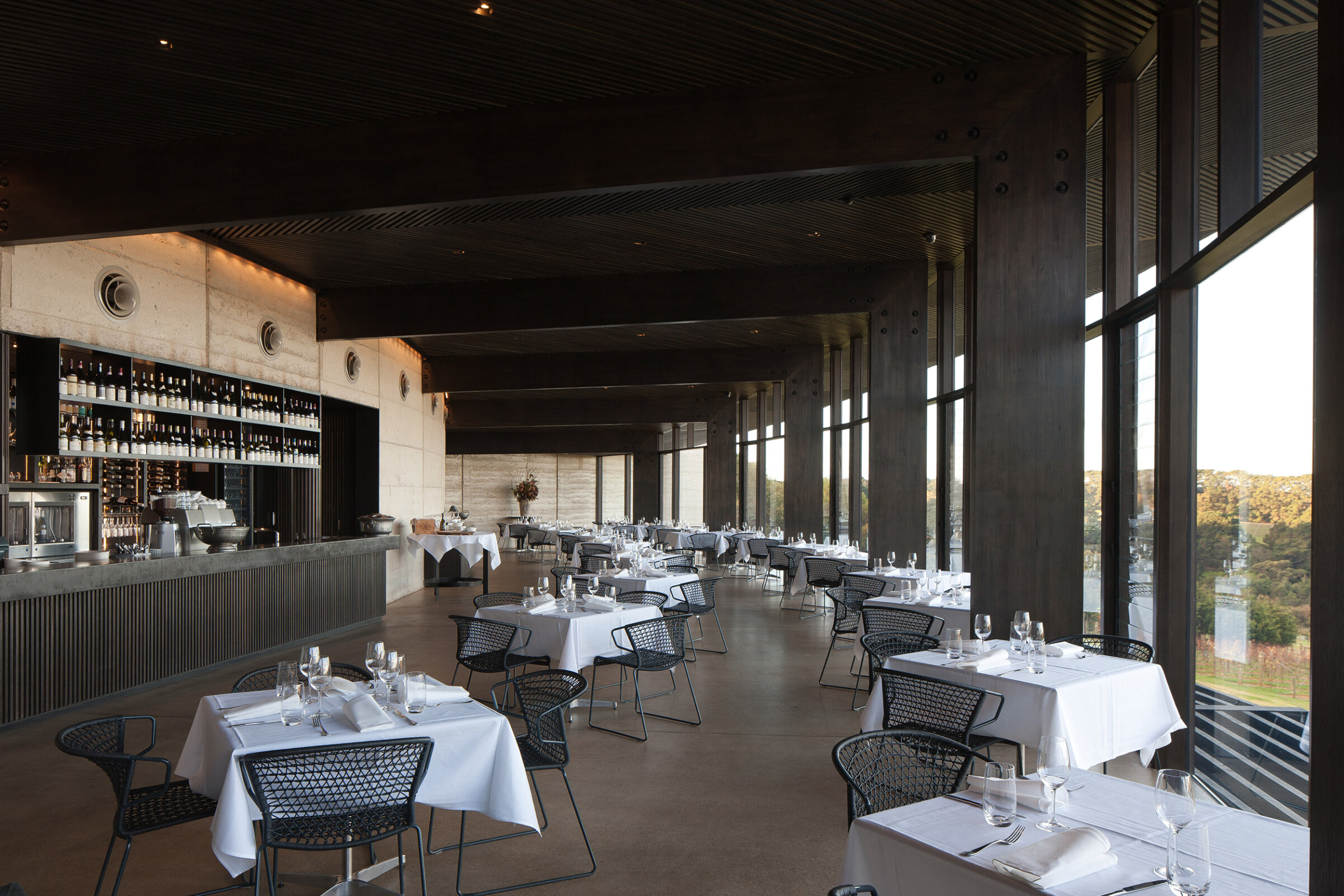
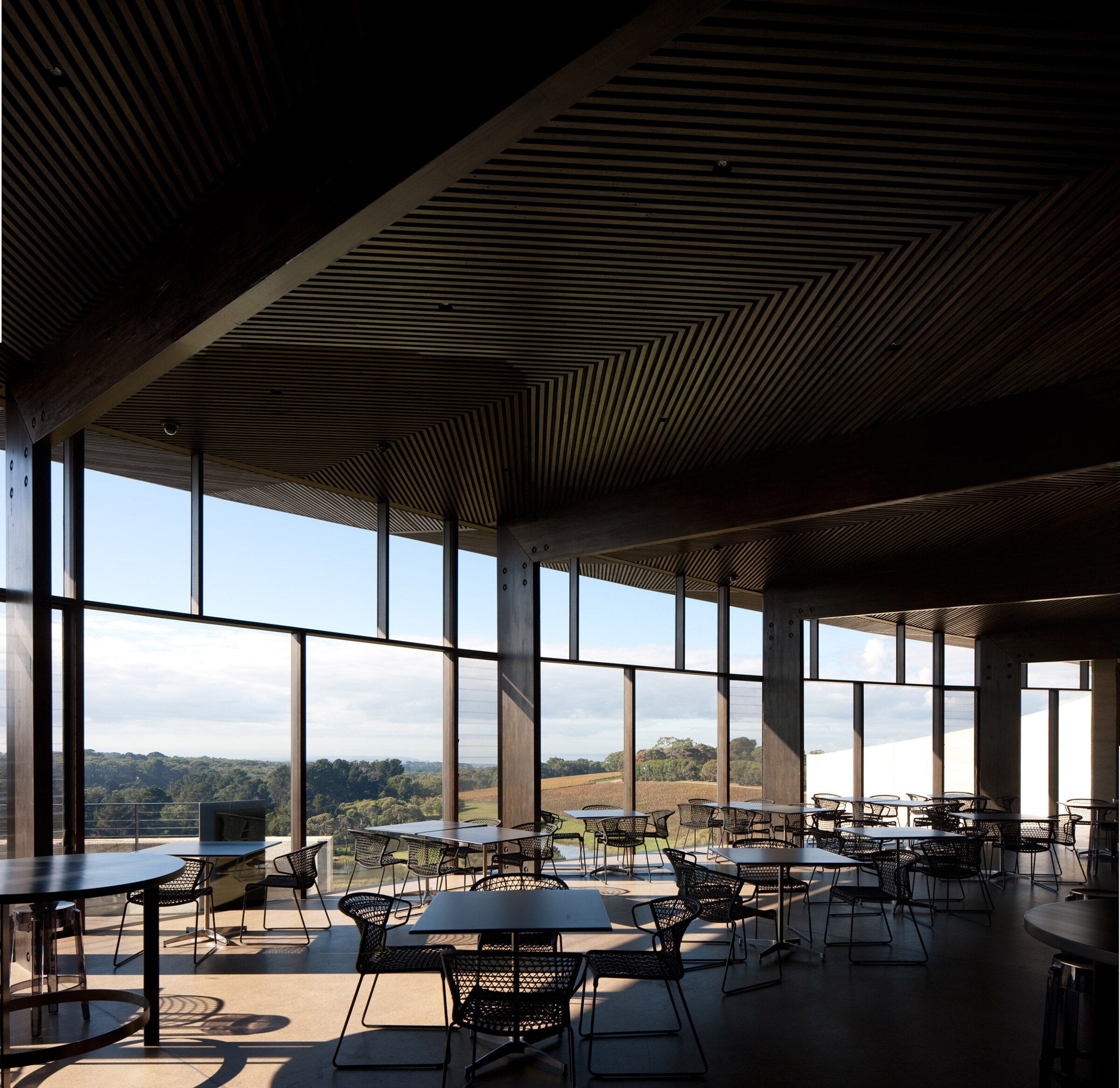
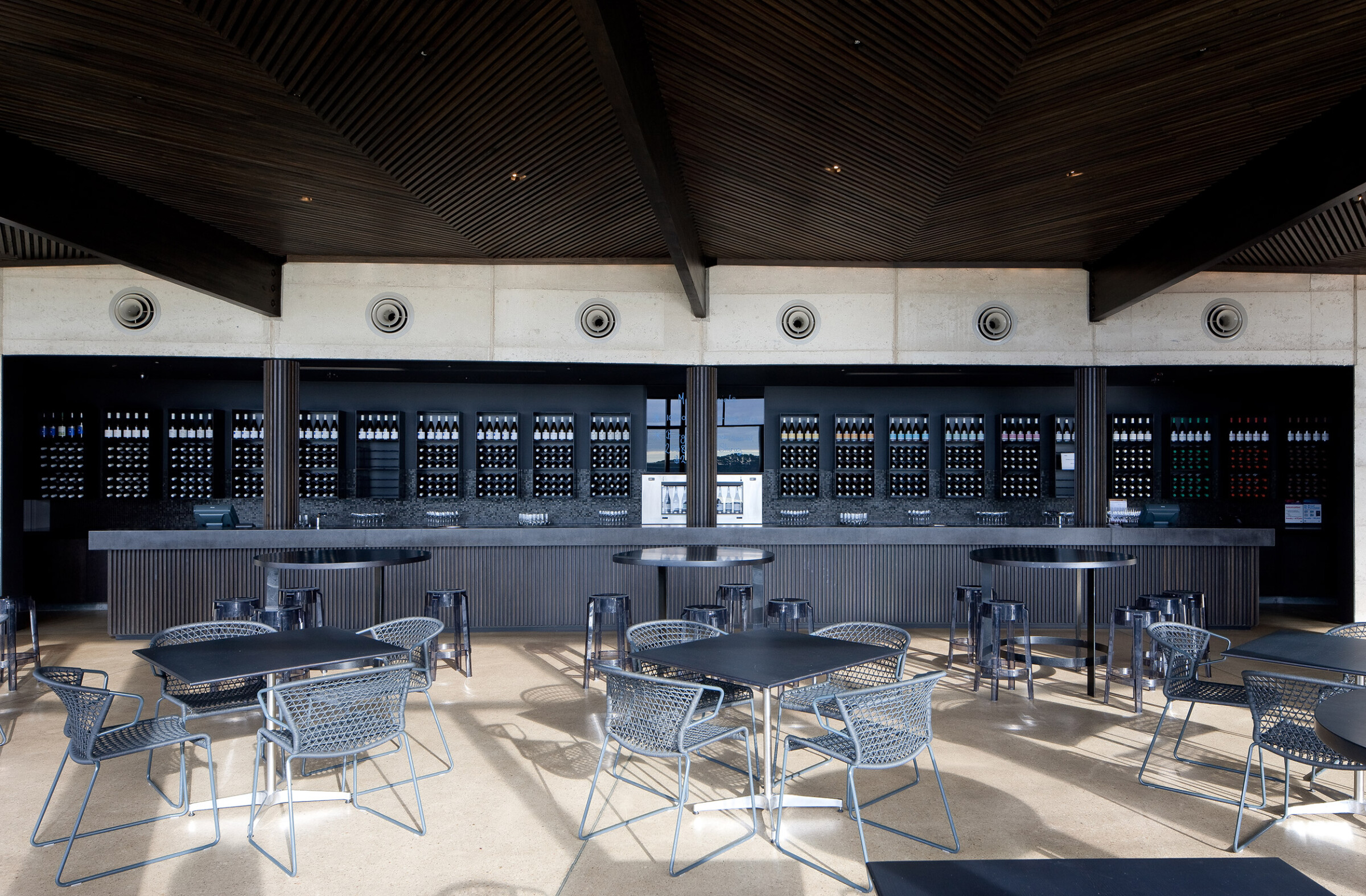
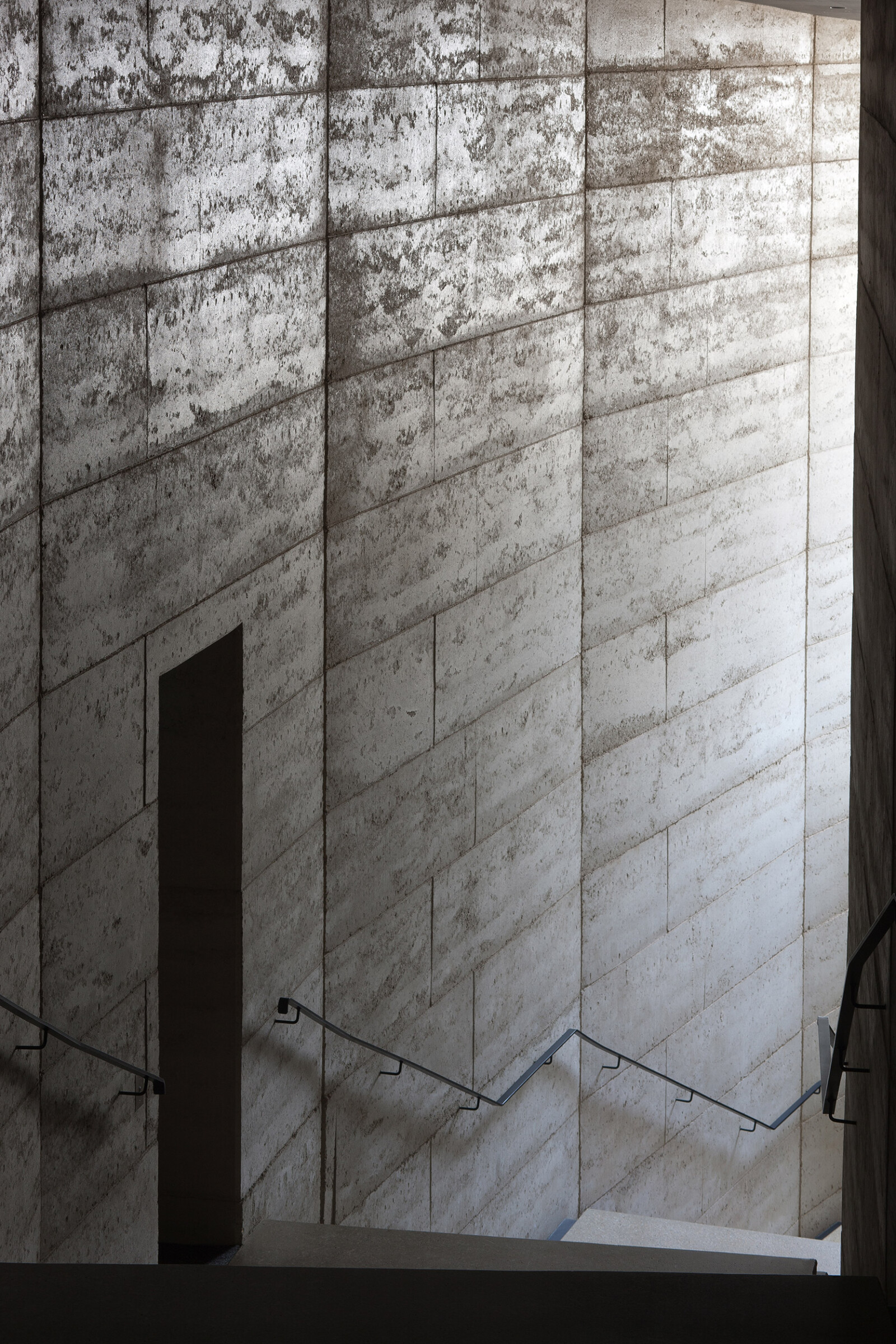
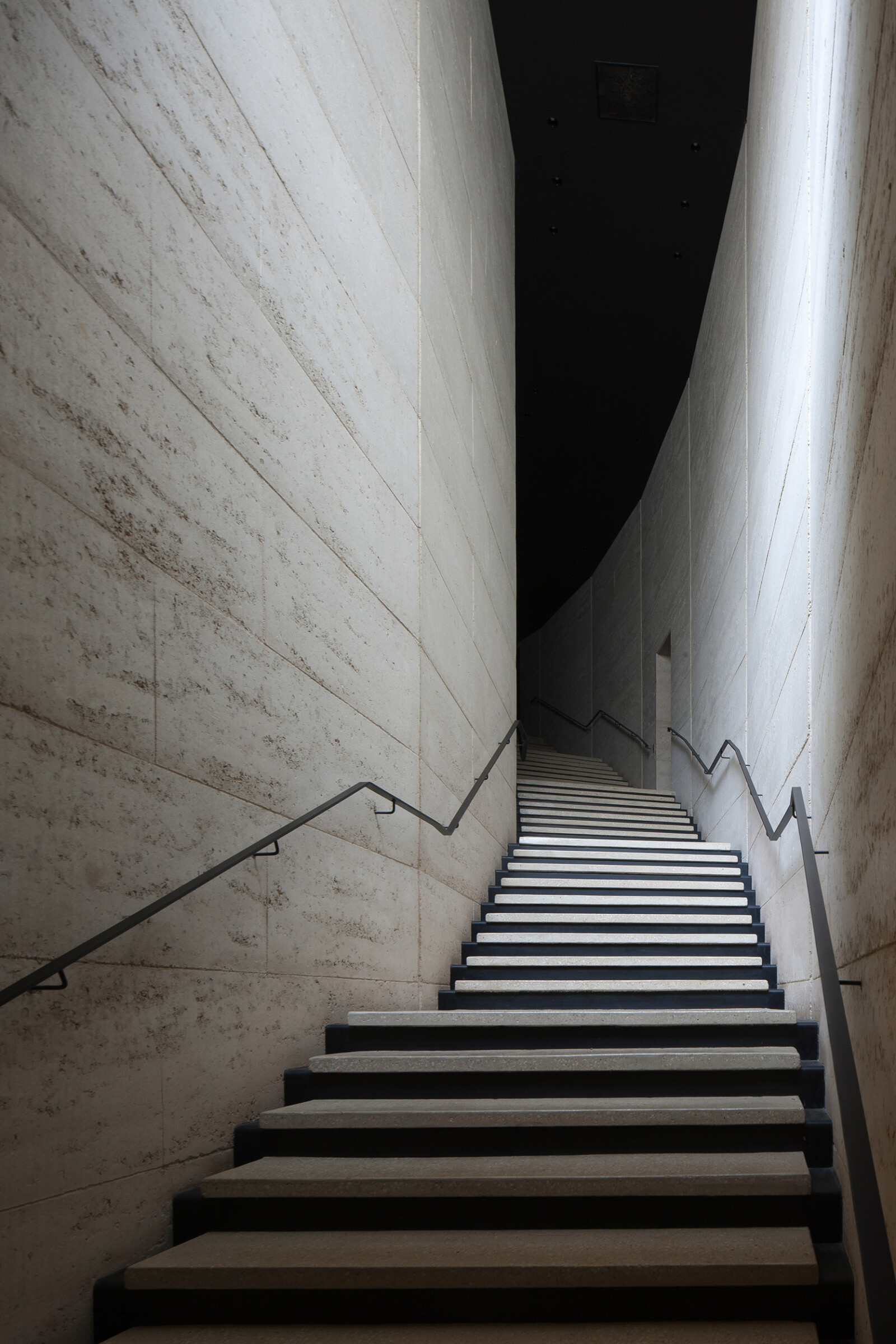
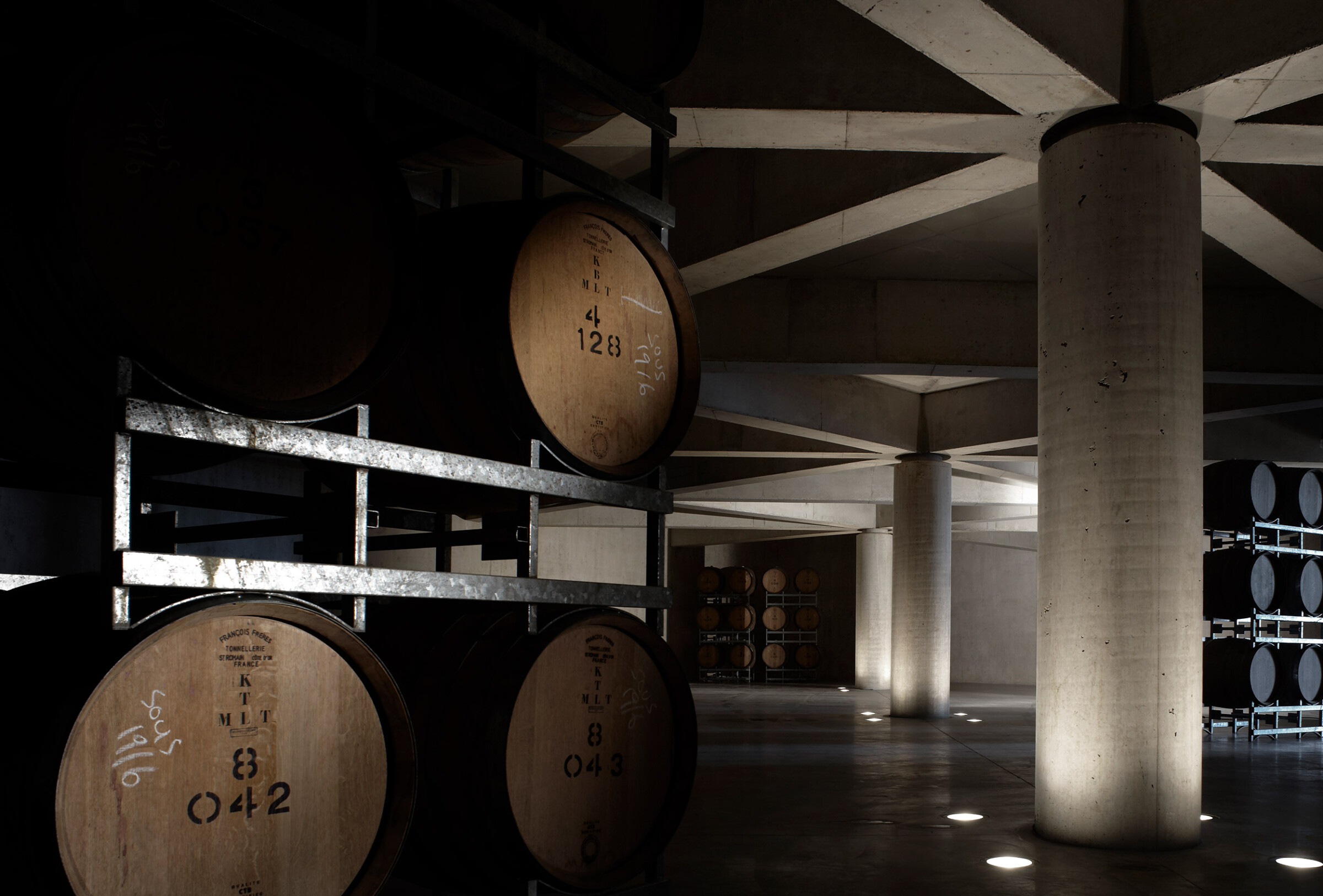
Port Phillip Estate Winery
Port Phillip Estate Winery carves into an undulating site overlooking picturesque vineyards, Westernport bay and Bass Strait. Sited just below a ridge, the building unfurls across site, spiralling out of the ground and slowly rising to form a 100m long wall with one opening. This abstract, sculptural form conceals much of the mass and various program within the building, presenting a bold and simple gesture to the public.
The main entry punctures the heavy Western orientated rammed earth wall to reveal a striking vista across the coastal vineyard and coastal landscape beyond. Contained between the walls and overarching timber-lined ceiling, a large restaurant and cellar door takes full advantage of this view. A grand ceremonial staircase leads down past the Port Phillip Estate offices into the underbelly of the building where state-of-the-art winemaking facilities are housed. An oval-shaped wine barrel storage room with a radiating coffered ceiling is reminiscent of a cathedral undercroft. Hidden directly below the restaurant are six luxury accommodation suites, complete with private decks and panoramic views. The layering of the program allows for the three distinct functions of the building to be housed together but privately contained.
A restrained material palette has been used through the building referencing textures and colours which are reminiscent of the harsh Australian environment. Burnt timbers and sun-bleached rammed earth feature predominately providing contrasting materials whilst helping to highlight their inherent character.
The rammed-earth exterior walls and large eaves shield interior spaces from the afternoon sun whilst providing excellent insulation. Double glazing throughout the project reduces energy loss. The museum wine store and barrel room are situated 7.5 metres below ground level, forming a natural cellar with ideal humidity and temperature for wine storage. These systems all reduce fluctuations in temperature reducing the reliance for mechanical heating and cooling. Solar panels heat water and control temperature while low energy LED lighting has been used throughout reducing the energy consumption by around 80 percent.
With almost half the property under vine, water needs are significant. The winery is not connected to mains water so all water used is from harvesting. An integrated water reclaiming plant converts black water to grade A water for irrigation and bathrooms. Stormwater is filtered then directed through reed beds providing additional filtration before being captured in a damn and used for irrigation. All rainwater from the roof is stored and filtered and then treated with UV light so that it can be used throughout the building for showers and drinking. These initiatives are part of an ongoing philosophy of environmental responsibility at Wood Marsh.
Port Phillip Estate Winery, is a robust sculptural building that celebrates the rural seaside landscape and maritime context. It’s an environmentally sensitive response to a client brief to provide an uncompromising architectural landmark that encapsulates the essence of wine making.
